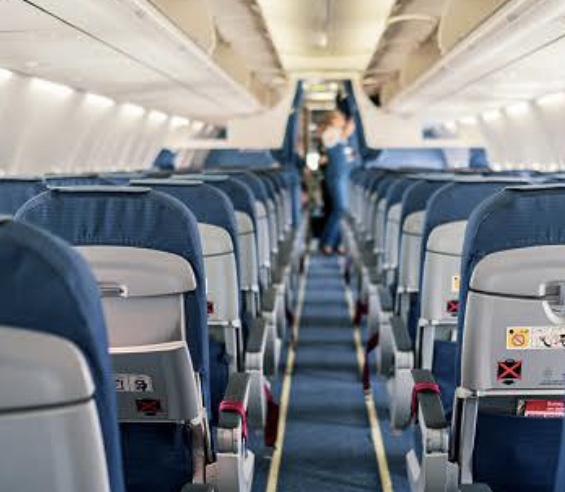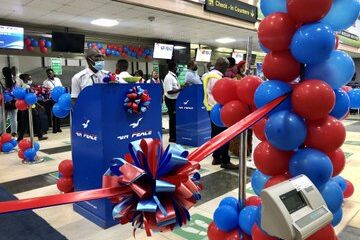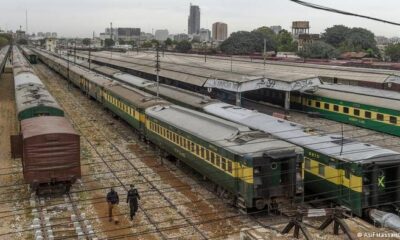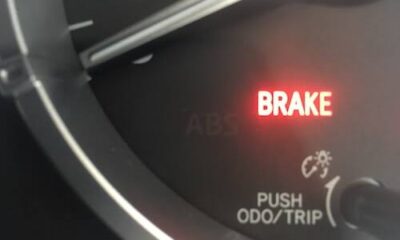AVIATION
Flight Safety Tips

The crew’s job is to get you to your destination safely. The role of flight attendants is to create and maintain a safe environment and to quickly evacuate the aircraft if necessary. Obey all directions from the crew. It’s the law, and it’s for your safety.
Safety is everyone’s responsibility. If you are concerned about a situation that could compromise the safety of your flight, speak to a member of the crew.
Whether you’re traveling domestically or internationally, learn about aircraft safety
Seat belts
For your own protection, Transport Canada recommends that you always remain seated and keep your seat belt fastened during the flight, even if the “seat belt” light is off. You can leave your seat temporarily when the light is off.
Although rare, turbulence is the leading cause of injury to passengers and crew. Turbulence is caused by differences in atmospheric pressure, cold or warm fronts, jet streams, mountains or thunderstorms. They can occur without warning and last only a few seconds.
Your seat belt should be fastened during take-off and landing, when there is turbulence and at any time during the flight that the crew members deem it necessary.
Airplane seat belts do not fasten the same way car seat belts do. Check if you are able to buckle your belt, adjust it firmly and unfasten it quickly. It should go over your hips, not around your waist. If you need a seat belt extension, please notify your airline before arriving at the airport.
Security measures card
You will find a safety precautions card at your seat which contains information about the aircraft, including how to open emergency exits and operate the equipment provided to you, such as life jackets and oxygen masks. The operation of the emergency exits may vary from one aircraft to another, and the exits located at the front and at the rear of the same aircraft may even open differently. It is therefore important to read the map and familiarize yourself with the safety devices before an emergency situation arises.
The Safety Precautions Card also includes instructions on how to adopt the “protective position”, which can increase your chances of survival and significantly reduce your risk of injury in an emergency.
To assume the brace position, you must position your body against the surface it is most likely to hit in the event of an impact. This position, taken before impact, will reduce the force and the possibility of injury.
The best protective position depends on a number of factors, including your size and physical limitations, the interior layout of the aircraft, the nature of the emergency and its magnitude, and the direction and sequence of forces impact of the accident.
Oxygen masks
In most commercial aircraft, an oxygen mask will automatically drop in front of you in the event of a decompression. To initiate the flow of oxygen, pull the mask towards you. Place it firmly over your nose and mouth , pull the elastic strap tight behind your head, and breathe normally. Even if the bag does not inflate, the mask is supplied with oxygen. If you are accompanying a child or someone who needs help, put on your own mask first, then help the other person. Keep your mask on until a crew member instructs you to take it off.
Emergency exits
The location of emergency exits differs from aircraft to aircraft. Check where your seat is in relation to the two nearest exits, so that in the event of an emergency, you will be able to follow the instructions of the crew members and leave the plane as quickly as possible.
Seats next to an emergency exit
If you are sitting in front of an emergency exit, you are the one who must open it in the event of an accident. Listen carefully to the safety precautions presentation, read the instructions and ask questions if you do not understand something. If you don’t think you can handle this task, ask to be moved.
Other informations
The pre-take-off safety briefing may also include information on carry-on baggage, smoking, oxygen masks and life jackets.
emergency evacuation
In an emergency evacuation, every second counts. Always leave behind all your carry-on baggage and personal items and follow the instructions of the crew members. Trying to retrieve your carry-on baggage from under your seat or in the overhead bins will delay evacuation. This poses a risk to you and to others.
Airplane clothing
Dress for the conditions you may encounter before, during and after your flight.
The clothes you wear can play an important role in your safety. For example, synthetic fabrics ignite quickly, shrink, melt, and continue to burn even though the heat source is gone.
-

 AVIATION5 years ago
AVIATION5 years agoPhoto News: Air Peace commence flight operations to South Africa
-

 Car News5 years ago
Car News5 years agoPolestar is recalls over 2000 electric cars due to software bug
-

 RAIL5 years ago
RAIL5 years ago36 Killed in Pakistan Train Accident
-

 Technology5 years ago
Technology5 years agoCommon mistakes in CO₂ emissions calculations
-

 Business5 years ago
Business5 years ago2016 Volvo XC60 review and specifications
-

 Reviews5 years ago
Reviews5 years ago2021 Audi A6 Specifications and Review
-

 Reviews3 years ago
Reviews3 years agoDebutant Kia’s new K8 sedan benchmarks luxury, safety
-

 SAFETY / CAR CARE5 years ago
SAFETY / CAR CARE5 years agoHandbrake warning light; what it means and what to do
